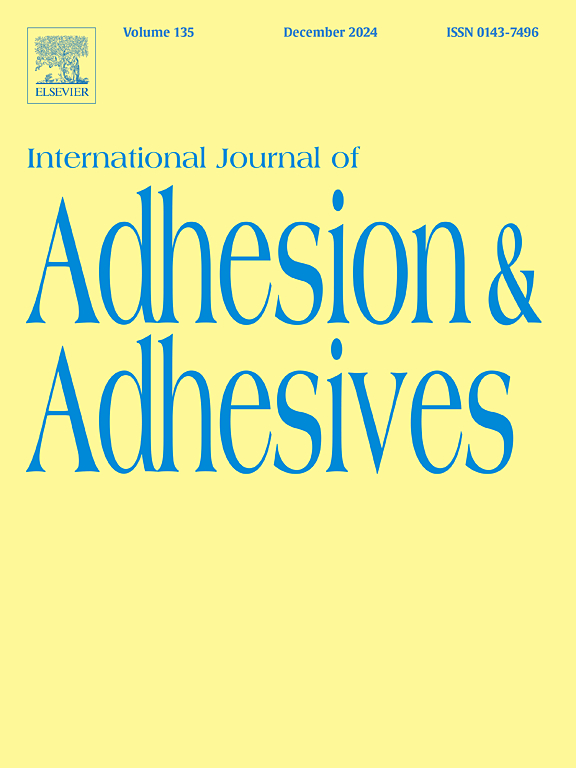Evaluating the differences of adhesion strength between mussel-inspired and conventional soy protein adhesives: A critical review
IF 3.5
3区 材料科学
Q2 ENGINEERING, CHEMICAL
International Journal of Adhesion and Adhesives
Pub Date : 2025-05-15
DOI:10.1016/j.ijadhadh.2025.104059
引用次数: 0
Abstract
The quest for sustainable and high-performance adhesives has driven extensive research into bio-based alternatives, with soy protein (SP) emerging as a promising candidate. Inspired by the remarkable adhesion mechanisms of marine mussels, recent studies have explored biomimetic strategies—such as dual crosslinking, organic-inorganic hybridization, and sacrificial bond mechanisms—to enhance the bonding strength and water resistance of SP-based adhesives. This review examines the effectiveness of these mussel-inspired modifications compared to conventional crosslinking approaches in SP adhesives. Surprisingly, the improvements in adhesive performance, particularly in terms of bonding strength and water resistance, were only marginally superior to those achieved through non-biomimetic modifications. This finding suggests that while mussel-inspired strategies offer valuable insights, further refinement is necessary to fully harness their potential. Specific technical directions, such as designing SP-specific mussel-inspired peptide segments, incorporating catechol-functionalized crosslinkers, and optimizing redox-responsive or pH-sensitive bonding mechanisms, represent promising routes for improvement. By critically evaluating these approaches, this review also highlights opportunities for advancing SP-based adhesives through novel crosslinking techniques, cost-effective formulations, and processing methods. The insights provided herein pave the way for future innovations in bio-based adhesives.

评估贻贝启发和传统大豆蛋白粘合剂之间粘附强度的差异:一个重要的回顾
对可持续和高性能胶粘剂的追求推动了对生物基替代品的广泛研究,大豆蛋白(SP)成为一个有前途的候选者。受贻贝卓越的粘附机制启发,近年来研究人员探索了双交联、有机-无机杂交和牺牲键合机制等仿生策略来提高sp基胶粘剂的结合强度和耐水性。这篇综述研究了这些贻贝启发的改性与传统交联方法在SP胶粘剂中的有效性。令人惊讶的是,粘接性能的改善,特别是在粘接强度和耐水性方面,仅略优于通过非仿生改性获得的效果。这一发现表明,尽管以贻贝为灵感的策略提供了有价值的见解,但要充分利用它们的潜力,还需要进一步改进。具体的技术方向,如设计sp特异性贻贝启发肽段,结合儿茶酚功能化交联剂,优化氧化还原反应或ph敏感键合机制,代表了有希望的改进途径。通过对这些方法的批判性评估,本综述还强调了通过新型交联技术、具有成本效益的配方和加工方法来推进sp基粘合剂的机会。本文提供的见解为未来生物基粘合剂的创新铺平了道路。
本文章由计算机程序翻译,如有差异,请以英文原文为准。
求助全文
约1分钟内获得全文
求助全文
来源期刊

International Journal of Adhesion and Adhesives
工程技术-材料科学:综合
CiteScore
6.90
自引率
8.80%
发文量
200
审稿时长
8.3 months
期刊介绍:
The International Journal of Adhesion and Adhesives draws together the many aspects of the science and technology of adhesive materials, from fundamental research and development work to industrial applications. Subject areas covered include: interfacial interactions, surface chemistry, methods of testing, accumulation of test data on physical and mechanical properties, environmental effects, new adhesive materials, sealants, design of bonded joints, and manufacturing technology.
 求助内容:
求助内容: 应助结果提醒方式:
应助结果提醒方式:


